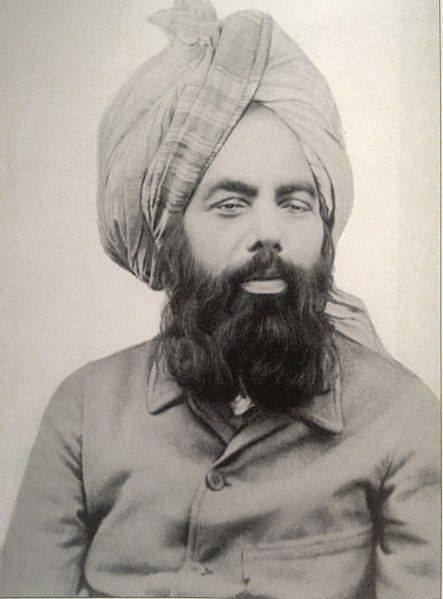 | ||
Mirza Ghulam Ahmad books The Heavenly Decree, Our Teaching, Lecture Ludhiana, Lecture Lahore: Islam in C, Tadhkirah | ||
The Criterion for Religions, the English rendering of Mi‘yarul Madhahib, was written and published in 1895 by Mirza Ghulam Ahmad founder of the Ahmadiyya Muslim Community. Ahmad believed that Islam was a living faith and the only faith by following which man could establish contact with his Creator and enter into communion with Him. The teachings contained in the Holy Quran and the Law promulgated by Islam were designed to raise man to moral, intellectual and spiritual perfection. Comparing Islam with other religions, Ahmad writes: "Islam's understanding of God is very simple and clear, and is in keeping with human nature. Even if the books of all other religions were to disappear along with all of their teachings and concepts, God, towards Whom the Holy Quran leads, would still be clearly reflected in the mirror of the laws of nature, and His Might and Wisdom, shall be found glowing in every particle." (page 30)
Contents
- Why deify a man
- Means for the discovery of truth
- Major faiths
- The hallmark of a true religion
- Differentiate true from false religion
- God in the Arya and Christian Religions
- References
This English Edition was Published in 2007, by: Islam International Publications Ltd. Islamabad, Sheephatch Lane, Tilford, Surrey, United Kingdom GU10 2AQ. (ISBN 1 85372 863 2).
Why deify a man
Ahmad asks, how could the British Government, consisting of people so enlightened subscribe to a religion,
"that deifies a man and thus detracts from the self-evident, eternal and immutable glory of the true God?... Nevertheless, I am hopeful that He will guide this courageous Government towards the right path. Our prayer for this Government is as much for its worldly prosperity as for the hereafter. No wonder therefore if we do witness the effect of this prayer.(p-6)Means for the discovery of truth
The author explains, modern education has replaced the old simple religious thinking with a complex philosophic mode. However, certain factors in the modern days have made the discovery of Truth even easier. First and foremost is the Freedom to preach and move around in these days. He writes:
"Is it not strange that while we are free to preach Islam in the streets of London, it is not possible for us to do the same in the Holy Mecca! Not only has this Government given freedom to publish books and preach one's religion to one and all, but has also taken upon itself to help every sect by spreading the knowledge of modern sciences and arts. Thus, through education and training it has opened the eyes of a whole world." (p. 1)Similarly the profusion of printing presses, has brought to light even the old scriptures 'buried in the earth' "even the Vedas of the Hindus have come out dressed in new pages. In other words, it has been reborn, and the tales invented by the fools and the rabble have been exposed." (p. 2).The Third means
"is the opening of the channels of communications, the establishment of an efficient postal system, and the conveyance of books from far off countries to our land and vice versa. All these means, which, by the grace of God, have now been made available in our country, and from which we are freely benefiting, are instrumental in searching for the truth." (p. 2)Major faiths
Ahmad observes India has three major religious faiths. The Araya Hindus, the Christians and the Muslims. He claims none is ready to accept that his faith is not based on the true principles.
The hallmark of a true religion
He writes: "The hallmark of a true religion is that even before we advance arguments in its favour, it is, in its very essence, so bright and resplendent that against it all other religions appear to be enveloped in darkness." Ahmad writes the teachings contained in the Holy Quran were in strict accord with instinctive human requirements and it took them to a higher plank of sublimity and spiritualism. The comparative study thus presented in this book gives to the reader a bird’s eye view of the existing religions and brings out sharply the characteristics of Islam. Ahmad says,'Islam is strictly in accord with human nature and appeals to mankind'.
Differentiate true from false religion
The author believes, a true religion can be differentiated from a false one, by its approach to the "recognition of God". He writes: "the religion which possesses the intrinsic light of truth, and which has the ability to draw hearts towards itself purely because of its manner of Divine recognition." (p. 6)
He compares the three major religions with regard to this criterion.
God in the Arya and Christian Religions
Ahmad critically examines:
The booklet consisting of 38 pages, critically examines the major religions and their principles briefly.the English translation is available.
